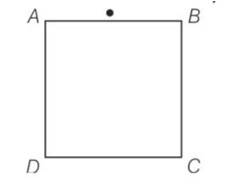Physics Ncert Solutions Class 12th
Get insights from 1.2k questions on Physics Ncert Solutions Class 12th, answered by students, alumni, and experts. You may also ask and answer any question you like about Physics Ncert Solutions Class 12th
Follow Ask QuestionQuestions
Discussions
Active Users
Followers
New answer posted
4 months agoContributor-Level 10
13.13 The given values are
m ( = 11.011434 u and m ( ) = 11.009305 u
The given nuclear reaction:
Half life of nuclei, =20.3 min
The maximum energy possessed by the emitted positron = 0.960 MeV
The change in the Q-value (ΔQ) of the nuclear masses of the
ΔQ =
where
= Mass of an electron or positron = 0.000548 u
c = speed of the light
m' = Respective nuclear masses
If atomic masses are used instead of nuclear masses, then we have to add 6 in the case of and 5 in the case of .
Hence the equation (1) reduces to
ΔQ =
= u
=1.033
New answer posted
4 months agoContributor-Level 10
13.12 particle decay of emits a helium nucleus. As a result, its mass number reduces to (226-4) 222 and its atomic number reduces to (88-2) 86.
+
Q value of emitted particle = (Sum of initial mass – Sum of final mass) , where
c = Speed of light.
It is given that
m ( = 226.02540 u
m ( = 222.01750 u
m ( = 4.002603 u
Q value = [(226.02540) – (222.01750 + 4.002603)]
= 5.297
But 1 u = 931.5 MeV/
Hence Q = 4.934 MeV
Kinetic energy of the particle = = 4.934= 4.85 MeV
particle decay of
New answer posted
4 months agoContributor-Level 10
13.6 In - decay, there is a loss of 2 protons and 4 neutrons. In every decay, there is a loss of 1 proton and a neutrino is emitted from the nucleus. In every decay, there is a gain of 1 proton and an antineutrino is emitted from the nucleus.
+
+
+ +
+ +
+ +
+ +
+
New answer posted
4 months agoContributor-Level 10
13.1 Mass of lithium isotope, = 6.01512 u
Mass of lithium isotope, = 7.01600 u
Abundance of , = 7.5%
Abundance of , = 92.5%
The atomic mass of lithium atom is given as:
m = = = 6.940934 u
Mass of Boron isotope, = 10.01294 u
Mass of Boron isotope, = 11.00931 u
Let the abundance of be x % and that of be (100-x) %
The atomic mass of Boron atom is given as :
10.8111 =
1081.11 = 1100.931 - 0.99637x
x = 19.89 %
Hence the abundance of is 19.89 % and that of &nb
New answer posted
4 months agoContributor-Level 10
This is a short answer type question as classified in NCERT Exemplar
m =100kg
Height h= 10m
Power= rate of work done =change of energy /time= mgh/t
=
New answer posted
4 months agoContributor-Level 10
This is a multiple choice answer as classified in NCERT Exemplar
(a, b, c) The length of the telescope tube L= f0+fe= 20+0.02= 20.02m
Also magnification is = 20/0.02= 1000
And image formed is inverted
New answer posted
4 months agoContributor-Level 10
This is a multiple choice answer as classified in NCERT Exemplar
(a, b) A magnifying glass is used, as the object to be viewed can be brought closer to the eye than the normal near point. This results in a larger angle to be subtended by the object at the eye and hence, viewed in greater detail. Morever, the formation of a virtual erect and enlarged image, takes place.
New answer posted
4 months agoContributor-Level 10
This is a multiple choice answer as classified in NCERT Exemplar
(a, d) Alexandar's dark band lies between the primary and secondary rainbows, forms due to light Scattered into this region interfere destructively.
Since, primary rainbows subtends an angle nearly 41° to 42° at observer's eye, whereas, secondary rainbows subtends an angle nearly 51° to 54° at observer's eye w.r.t. incident light ray. So, the scattered rays with respect to the incident light of the sun lies between approximately 42°and50°.
New answer posted
4 months agoContributor-Level 10
This is a multiple choice answer as classified in NCERT Exemplar
(d) For µ = 16., the critical angle, µ = 1/ sin C, we have C = 38.7°, when viewed from AD, as long as angle of incidence on AD of the ray emanating from pin is greater than the critical angle, the light suffers from total internal reflection and cannot be seen through AD.
New answer posted
4 months agoContributor-Level 10
This is a Short Answer Type Questions as classified in NCERT Exemplar
Sol:
Taking an Exam? Selecting a College?
Get authentic answers from experts, students and alumni that you won't find anywhere else
Sign Up on ShikshaOn Shiksha, get access to
- 65k Colleges
- 1.2k Exams
- 686k Reviews
- 1800k Answers

